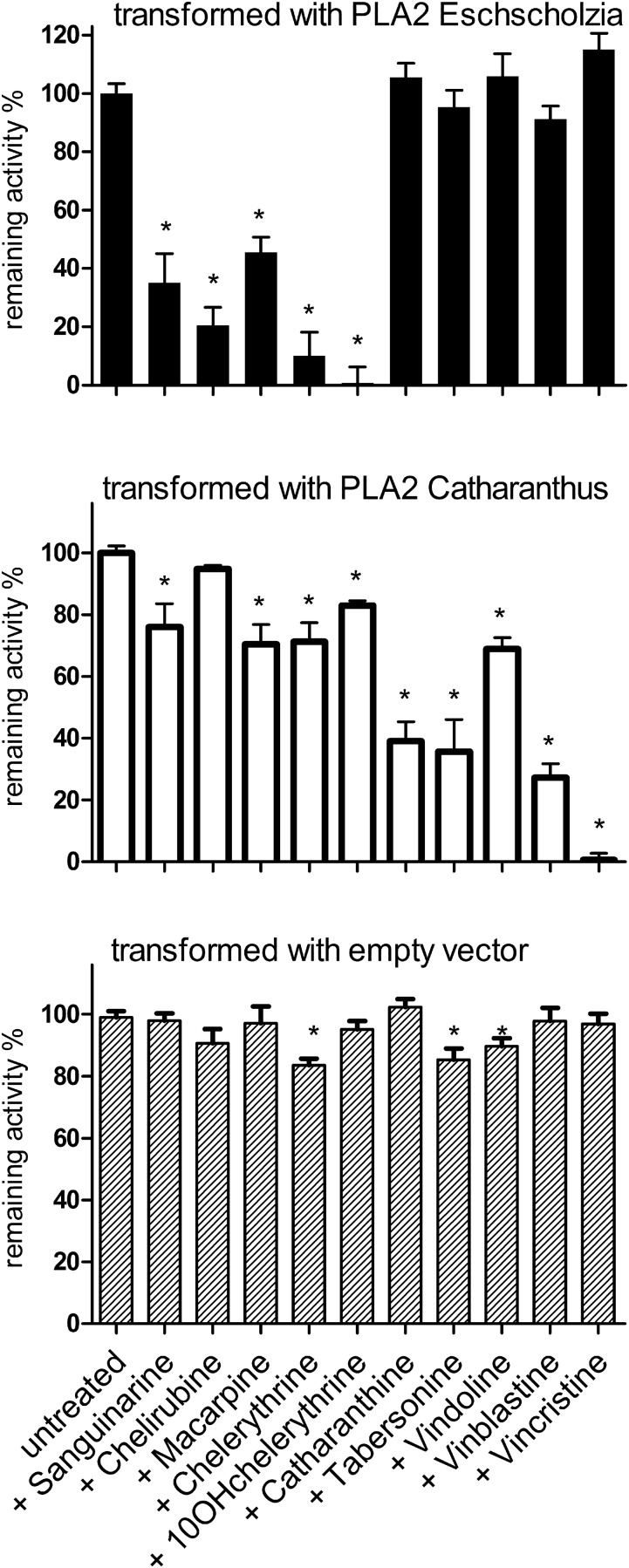Figure 9.
Inhibition by Benzophenanthridines and MIAs of PLA2 Activities in Plasma Membranes of Transformed N. benthamiana Leaves.
Leaves of N. benthamiana were transiently infected via Agrobacterium tumefaciens with plasmids that express PLA2 genes under the control of the TMV promoter (cf. Methods for details). The transferred ORFs were previously identified in cell cultures of E. californica (data in upper panel) or C. roseus (data in middle panel). Leaves infected with the empty vector (bottom panel) were processed similarly and display the PLA2 activity of the host plant. Plasma membranes were isolated from the infected leaves and PLA2 activities assayed in the nonstimulated state as in Figure 8. Data are means ± se; n = 4 leaf samples. They are normalized to the mean PLA2 activity of similarly treated parallel samples, assayed in the absence of alkaloids, which is set to 100% (representing ∼5 pkat/mg membrane protein). Asterisks indicate significant (P < 0.05) inhibition of this activity by alkaloids. The experiment was done with one set of parallel treated greenhouse plants. Repetition with another set resulted in a similar relation of PLA2 activities and susceptibility to the alkaloids tested (cf. Supplemental Figure 5).

